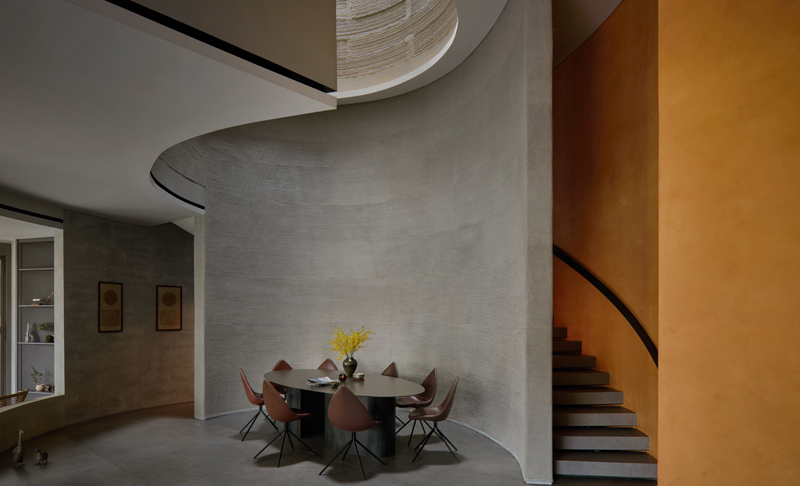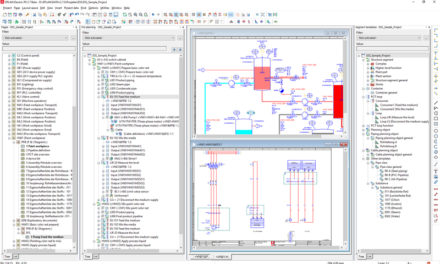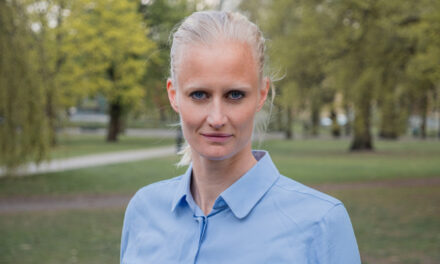In a quiet residential enclave in Singapore, a new kind of home has emerged – part machine-age marvel, part architectural poetry. QR3D, the city-state’s first 3D-printed multi-storey residence, signals a bold new chapter in Southeast Asia’s built environment.
The future of architecture has long been theorized in glossy renders and academic writing but rarely does it materialise so completely as it does in QR3D – a four-storey landed house recently completed by Park + Associates (P+A) in collaboration with construction innovators CES_InnovFab as a home for Lim Koon Park, founder and Principal of P+A.
Described as a “springboard for implementation,” the house is not merely a speculative experiment – it’s a living, breathing proof of concept for how 3D-printing might reshape our cities. P+A set out to demonstrate 3D-printing as a practically viable and transformative technology for the built environment sector – and one capable of addressing the current challenges facing the industry. While 3D-printing for construction in Singapore is certainly not new, it is mainly used for small scale and utilitarian uses, such as feature walls, planter troughs, and prefabricated bathroom units 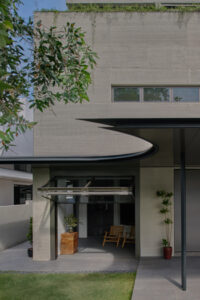 for multi-residential projects. Now P+A has demonstrated how it can be used to ‘print’ a building. QR3D is Singapore’s very first full-fledged, multi-storey 3D-printed house, representing a leap for the technology’s use. P+A is no stranger to driving new ways of thinking and delivering architecture. Known for its sculptural restraint and contextual sensitivity, the studio, founded by Lim Koon Park, approached QR3D with characteristic rigour, balancing bold innovation with deep respect for form, function, and memory. The result is a home that wears its construction method proudly; its layered concrete striations left raw and tactile, embracing the very texture of the process.
for multi-residential projects. Now P+A has demonstrated how it can be used to ‘print’ a building. QR3D is Singapore’s very first full-fledged, multi-storey 3D-printed house, representing a leap for the technology’s use. P+A is no stranger to driving new ways of thinking and delivering architecture. Known for its sculptural restraint and contextual sensitivity, the studio, founded by Lim Koon Park, approached QR3D with characteristic rigour, balancing bold innovation with deep respect for form, function, and memory. The result is a home that wears its construction method proudly; its layered concrete striations left raw and tactile, embracing the very texture of the process.
– While we were excited by the novelty of 3D printing, our aim was always to create a family home that would be relevant and respected decades from now, says Park. We didn’t want the technology to overshadow the essence of the home.
The house comprises more than 90% 3D-printed material, created both onsite and offsite using a custom concrete mix honed through extensive R&D. The ambition was twofold: to demonstrate 3D-printing’s practical viability in a notoriously high-stakes industry, and to challenge the perception that digitally-driven architecture must sacrifice emotion at the altar of efficiency.
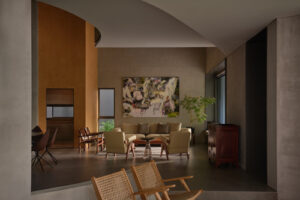 Indeed, QR3D is rich with emotional intelligence. At its heart is an oculus: a dramatic sculptural void hovering above the dining space. More than an architectural flourish, it is a quiet tribute to Park’s former home, a 1990s-era neoclassical residence that once stood on the same plot. The oculus captures that sense of formality and grandeur, while introducing a passive cooling system that channels hot air up and out through a hidden extractor fan. Light filters through the oculus, casting shifting shadows across circulation spaces and private rooms; Park claims his favourite place in the house is the dining area under the oculus, for its quality of light that changes throughout different times of the day.
Indeed, QR3D is rich with emotional intelligence. At its heart is an oculus: a dramatic sculptural void hovering above the dining space. More than an architectural flourish, it is a quiet tribute to Park’s former home, a 1990s-era neoclassical residence that once stood on the same plot. The oculus captures that sense of formality and grandeur, while introducing a passive cooling system that channels hot air up and out through a hidden extractor fan. Light filters through the oculus, casting shifting shadows across circulation spaces and private rooms; Park claims his favourite place in the house is the dining area under the oculus, for its quality of light that changes throughout different times of the day.
But beyond aesthetic and emotional resonance, QR3D also redefines constructional logic. 3D printing reduces labour, waste, and the need for multiple trades, simplifying even the most complex architectural gestures into a seamless process. It also minimised environmental disturbances common to conventional construction – less dust, less noise, less disruption.
Park says of the project:
– Given that this was our first venture in 3D-printed architecture, and excited as we were, we definitely felt some weight on our shoulders. Though a novel technology with a unique aesthetic and through all the excitement, it was still first principles for us – that is, to create a comfortable family home that can remain relevant and respected in decades to come. Lim Koon Park, Founder and Principal at Park + Associates.
In pushing the boundaries of what’s possible with digital fabrication, P+A has proven that technology need not come at the cost of soul. QR3D feels neither robotic nor alien. Instead, it feels inevitable -a glimpse of a future where architecture is both technically progressive and deeply human. And in a region as dynamically urban as Southeast Asia, that future can’t come soon enough.
Photo by Jovian Lim

